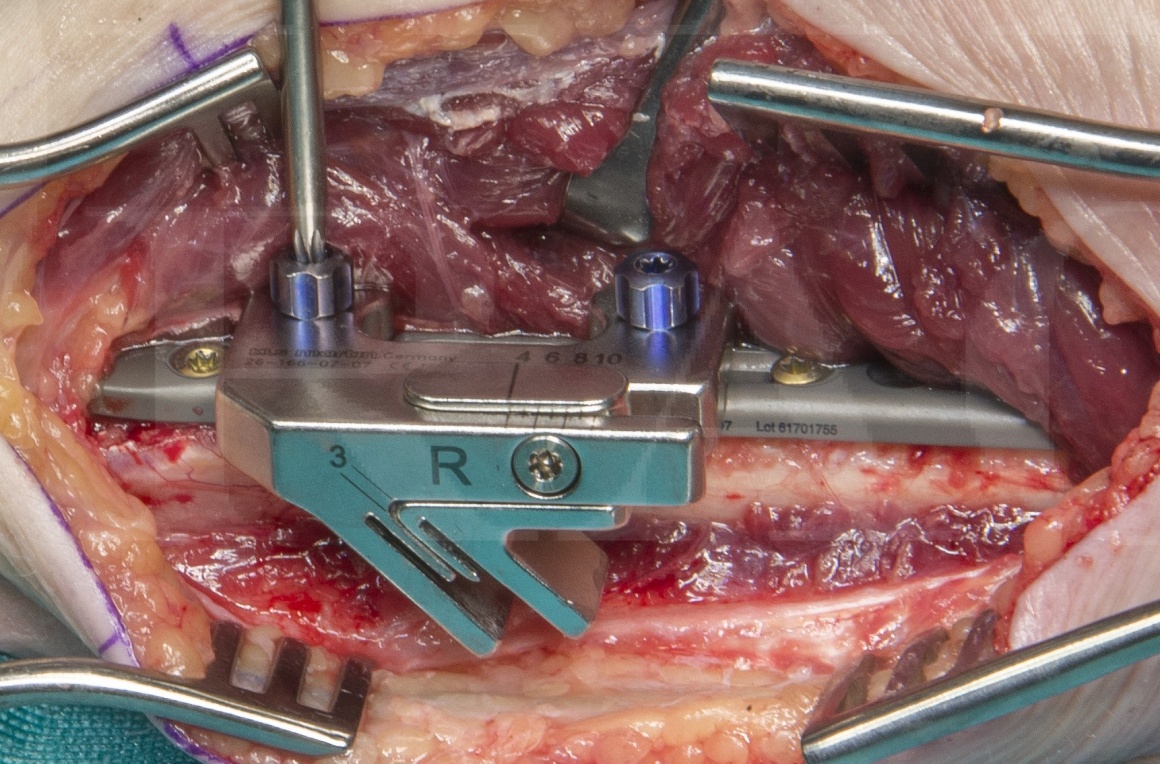Ulnar shortening osteotomy using the RECOS locking plate
Overview

Subscribe to get full access to this operation and the extensive Upper Limb & Hand Surgery Atlas.
Learn the Ulnar shortening osteotomy using the RECOS locking plate surgical technique with step by step instructions on OrthOracle. Our e-learning platform contains high resolution images and a certified CME of the Ulnar shortening osteotomy using the RECOS locking plate surgical procedure.
An ulnar shortening osteotomy is a common procedure in wrist surgery and was originally described by Milch in 1941 for the treatment of an ulnar positive variance following a distal radius malunion. Painless load transmission through the wrist is dependent upon the alignment of the radius with the ulna. Studies have shown that a length alteration in the ulna of 2.5mm has dramatic implication on load transmission across the wrist.
Ulnar impaction syndrome is a process affecting the ulnocarpal joint with some evidence that overloading through the distal ulna is the cause. Ulnar positive variance is known to be a risk factor as it increases loads through the ulnocarpal joint.
Ulnar impaction syndrome can be congenital, developmental or degenerative, or may occur following trauma. Post traumatic impaction commonly results from a distal radius fracture or less commonly after premature radial epiphyseal closure.
Although any amount of ulnar shortening may rebalance and improve wrist loading, between 2-3 mm is recommended by most authors. This should result in an 80% reduction in load transmission through the ulno-carpal articulation.
Currently ulnar shortening is performed for a variety of indications and although these may demand different degrees of shortening, the same techniques and instruments may be used to ensure a high degree of precision and control.
Recent years have seen a number of manufacturers introduce specialised instrumentation and customised plates. In this section I describe one technique of ulnar shortening using the RECOS (KLS Martin Group, Germany) locking reconstruction system for ulnar shortening.
This is a pre-contoured titanium plate with drill sleeves and colour coded screws.
An adjustable jig allows the surgeon to perform a predetermined degree of shortening whilst two sliding holes allow compression across the osteotomy followed by lag screw placement and rigid fixation.
The RECOS plate requires a very limited number of instruments and it is consequently one of the simpler procedures to follow, in comparison to a number of alternative implants.
Author: Tahseen Chaudhry, (FRCS Tr & Orth) Consultant Hand Surgeon
Institution: Birmingham Hand Centre, Queen Elizabeth Hospital, Birmingham, UK
Clinicians should seek clarification on whether any implant demonstrated is licensed for use in their own country.
In the USA contact: fda.gov
In the UK contact: gov.uk
In the EU contact: ema.europa.eu
Online learning is only available to subscribers.



















